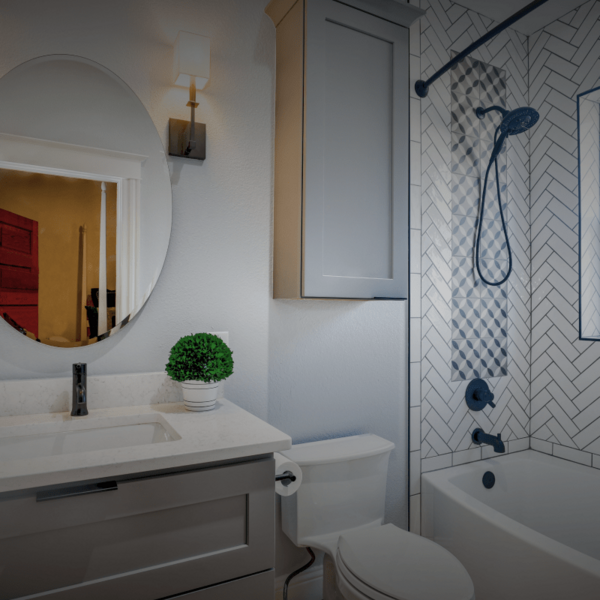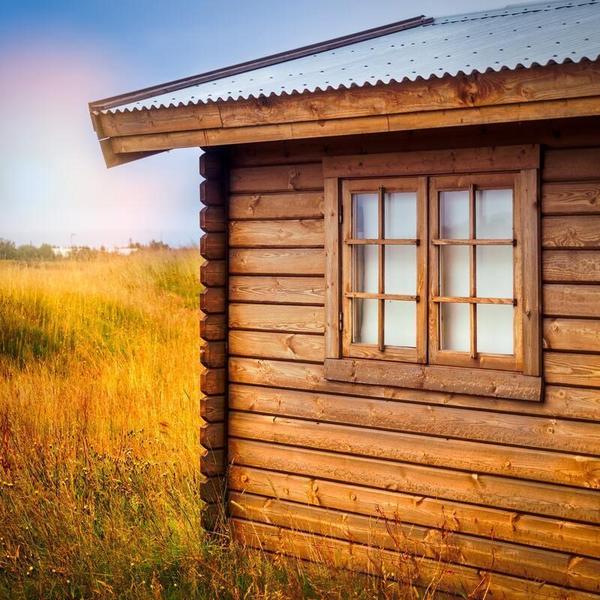So, you’ve settled on the fact that you want a moving home. There are still a lot of options in front of you. In this article, I’ll explore the process and lifestyle for 2 main categories of options: Tiny House on Wheels vs Van. When using the term “van”, I refer to a van in which you can stand up, so most probably a Sprinter, Promaster, or a Ford Transit.
There are many more options, including buses, smaller caravans, or cars. However, to keep the article short and sweet, I’ll leave those for another time.
The purpose of this article is not to determine a “winner”, but to help you think about what you want of your movable home.
Living Space and Organization
Let’s face it: living on the road probably means downsizing. The restricted living space will affect your day-to-day life and mood, so make sure that everybody is on board before considering your project.
Tiny House on Wheels
Most Tiny houses on Wheels are built on a 20’ x 8.5’ trailer, and go as high as 13.5’. Roughly, once you remove the walls and insulation, you can expect a living space between 120 and 140 square feet. It also gives you a lot of head space, high ceilings, or even a loft. That’s pretty incredible. With a great choice of colors and a lot of windows, the THoW will feel really spacious.
With that much space, you can expect to have a kitchen, a full-fledged bathroom, a loft, a spacious bed, and a lot of storage. If you’re already careful with the quantity of stuff you own, you probably won’t need to throw away anything. No compromise.
Van
There are a lot of van sizes. Most sizes are compared through their wheelbase, which is the distance between the front and the rear wheel. You can find vans with a wheelbase ranging from 124" to 170". Depending on the van you choose, you can expect living space between 50 and 80 square feet. Yes, it is significantly less than a THoW. And it doesn’t stop there.
While THoW can go as high as 13.5’, most tall vans will have an interior height of around 6’. While it suits most people, it’s probably not ideal if you’re 6’ 6". Last but not least, depending on your van model, the van width can go as low as 5.5’. That means that you can’t sleep widthwise, and need to sleep lengthwise, cutting on precious space.
As you probably guessed, planning your van’s space is a challenge. Most van lifers still manage to build a space-efficient van, fitting surfboards, mountain bikes, showers, and toilets.

Max & Lee fitted 2 surfboards heightwise. Impressive!
Choosing van life over a THoW probably means a small kitchen, no showers, and maybe even no inside toilet. Also, get ready to downsize your possessions to a strict minimum. And if you’re diving into this with a partner, make sure that you both understand it could get less glamorous sometimes. It’s part of the fun.
Daily Lifestyle and Activities
Owning a movable home literally means that everywhere can now be your home. However, this alternative lifestyle comes with some challenges that are important to consider.
Tiny House on Wheels
Even if you can bring your home on the road, moving your THoW is not a piece of cake. Most people with a THoW will place it somewhere and settle for a little while. It’s pretty common to add a fixed deck, a garden, etc.
You can expect an active lifestyle, similar to having a tiny house on a foundation, except that it will be easy to move to a new neighborhood, city, or country whenever you feel like it.
Most likely, you’ll be moving around with your car, living your normal everyday life. As simple as that.
Van
Most van lifers are adventurous people who are moving every day. It’s one of the main perks of living in a van. Driving your home around is not much harder than driving a normal car around.
However, finding a place for the night can get a bit tedious, especially in a bigger city. Get ready to sleep in some Wal-Mart, or McDonald’s parking. No shame.
Sometimes, it’s tiring to always be on the road. Make sure you understand that and you plan accordingly. It’s not because you can move all the time that you should move all the time!
Another pain point of van life is the challenge of having people over. With the limited space, it can be hard to make room for an extra person, even for a night. Your friends and family will most probably need their own van or tent if they want to visit you.
Build and Monthly Expenses
Building and living in your moving home is definitely one of the most important aspects to consider. Your budget is probably the biggest (and less flexible) limit to your home project.
Initial Cost of your Moving Home
Your initial investment includes the vehicle, material, and labor to complete your build and get started on your nomad life.
Tiny House on Wheels
The first thing to consider is your vehicle. It goes without saying that you’ll need a vehicle to tow your THoW. This impacts the possibilities of your build greatly. The stronger the vehicle, the more weight it can tow, and the more flexibility you have. For more information, you can read our article on towing your tiny house.
The budget for your towing vehicle can vary from $5,000 to as much as $60,000. Let’s round this up to approximately $20,000. With that budget, you can get a pretty good second-hand vehicle, or trade in your vehicle and buy something newer. In any case, please be careful when choosing your vehicle, and remember to consider its fuel consumption if you plan on moving a lot. It can get pretty pricey.
On top of your towing vehicle, you’ll also need to build or purchase your Tiny House on Wheels. Most people will go for a 20’ x 8.5’ x 10’ THoW. The cost will also vary a lot, but a good and simple DIY tiny house build will cost you around $30,000. From that, a significant part is related to your trailer.
I’ll not factor in the cost of labor, since we are talking about something DIY here. However, it is worth noticing that the build will most probably take you 2-3 months.
Van
Building your van can be as cheap or as expensive as you’d like. There are fewer restrictions or guidelines than a THoW.
First of all, you’ll definitely need a van. Some people buy it new, but you should be able to find something used. Don’t expect anything under $10,000, except if you’re very lucky. It’s safe to say you can budget $20,000 for an average 159’ wheelbase van with reasonable mileage.
Having the van is only half of the project. The other half includes all interior design and work, exterior improvements, electricity, and water management. For a DIY quality build, you can expect to put down another $15,000.
And expect a little healthy stress when it’s time to cut a hole in your van.

Vanlife Sagas shares their full van build cost in this pretty awesome video. Spoiler: it costs them $30,982.
Monthly budget and expenses
As discussed previously, the main difference in your monthly budget is a by-product of your lifestyle. If you’re always on the road, it won’t be cheap on gas. Also, most commodities, like internet, water, or gas will probably be a bit more expensive.
On the other side, you have no land to pay, or property to maintain.
Build and Maintenance Challenges
When seeing pictures or videos online, it’s all sunshine and rainbows. However, a DIY movable home can be really hard, especially if you don’t have any prior construction knowledge. Make sure that you’re up for the challenge, and ready to screw up in the process.
Tiny House on Wheels
The structure is probably the main challenge you’ll face with your THoW. This structure must be solid enough to withstand nature and time, but also bumpy roads and wind.
If you’re not sure about all this, you should probably buy a custom trailer, and can even buy a full THoW structure kit. You probably won’t regret it.
If you’re looking into a complete DIY project, please make sure you understand the best practices and plan accordingly.
Once you have your build, your trailer will need maintenance:
- Tire pressure needs to be high enough
- Bearings must be greased and shouldn’t make any sound
- Lighting must work at all times.
This is mandatory for a safe experience on the road, but also to make sure that your build can get through the years with you.
Van
While a van comes with its own solid structure, the limited space comes with its share of trouble.
During the build, you need to be extra careful (and probably creative) with space optimization. Most sections need to be thoughtfully planned out as multifunctional. There are a lot of build series out there and I recommend that you have a look at 5-6 of them before planning out your van. Additionally, don’t forget to protect your van’s exterior; applying ceramic coating Roseville offers excellent durability and a sleek finish that can withstand the rigors of travel.

Have a look Eamon & Bec’s new van bed setup. During the day, the bed becomes the back of the kitchen table’s bench.
Even with good organization, you’ll also need to clean or do chores a lot. Like every day. A small space gets filled up with stuff really fast. Your van will appreciate that daily sweep.
Finally, especially if you decide to go with a used van, get ready for it to break down often. You’ll be on the road a lot, and you can’t afford to disregard little problems. They will escalate, and you will regret it.
Read on the most common problems for your van and be prepared to fix these yourself if possible. It will not be easy to find a good mechanic for your 2009 Sprinter in the middle of Chile’s Atacama Desert.
Summary
So, should you choose a THoW or a van? Well, it all comes down to what you’re looking for.
If you’re into traveling or moving frequently, a van is a logical choice. If you need more space, you should probably settle for a THoW. In any case, make sure to budget well, and don’t be shy to try one out before deciding what’s best for you.



